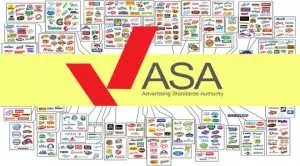 The Advertising Standards Authority (ASA) has addressed adult-content advertisers to make sure they use their audience and media targeting tools more appropriately in order to minimise the exposure of underage individuals to age-restricted adverts.
The Advertising Standards Authority (ASA) has addressed adult-content advertisers to make sure they use their audience and media targeting tools more appropriately in order to minimise the exposure of underage individuals to age-restricted adverts.
The ASA’s plea was aimed at advertisers for alcohol, gambling and high fat, salt or sugar (HFSS) companies after the latest monitoring sweep of the Authority in terms of online advertising platforms has measured the coverage of age-restricted ads to audiences in the UK. At the time it took its latest measures on the issue, the advertising regulatory body focused on monitoring so-called high-volume online advertising platforms that target different age ranges, such as YouTube.
As revealed by the ASA itself, the monitoring underpinning the aforementioned process was focused on dynamically served ads for gambling, alcohol and HFSS products. The advertising regulatory body revealed that the underlying technology used to serve the abovementioned ads provides advertisers with the chance to target subsets of the sites’ audience based on personal data, such as customer age, location, online browsing preferences and interests, etc.
Under the existing legal framework, adult advertisers in the UK are not permitted to serve age-restricted adverts on children’s media platforms, or in other words, they are not allowed to publish ads on websites that are especially for children, or where children account for no less than a quarter of the audience. However, such adverts are allowed to be placed on mixed-age media websites where the adult audience accounts for at least three-fourths (75%).
Childnen and Adult Groups Targetted by Almost the Same Number of Gambling and Alcohol Ads
 In its research, review and monitoring, the ASA used Avatars in order to identify the trends in which ads are being delivered to different audiences, be it children, adults or age-unknown groups. The Avatars used by the Authority was specially designed to reflect the specific online browsing preferences and profile of the aforementioned age groups.
In its research, review and monitoring, the ASA used Avatars in order to identify the trends in which ads are being delivered to different audiences, be it children, adults or age-unknown groups. The Avatars used by the Authority was specially designed to reflect the specific online browsing preferences and profile of the aforementioned age groups.
During the 3-week monitoring period, the six age-categorised Avatars accessed a total of 27,395 ads published on 250 websites.
The ASA found that gambling ads were served in very similar numbers to children and adult groups, with no particular preference to adult profiles. The groups that had no browsing history about their age were served fewer adverts of gambling operators on the mixed-age media platform. Alcohol adverts were not accessed by any Avatars. When it comes to HFSS ads, the advertising regulator’s research found they were served in broadly similar numbers to both children and adult groups, while a considerably higher number of ads were presented to the neutral-age group.
Over the last few years, the larger number of gambling and alcohol ads, as well as ads to products that could cause addictions, has been found concerning by the ASA. The Authority has been trying to minimise the exposure of underage individuals to such ads to prevent a possible negative impact on their lives and health.
- Author


